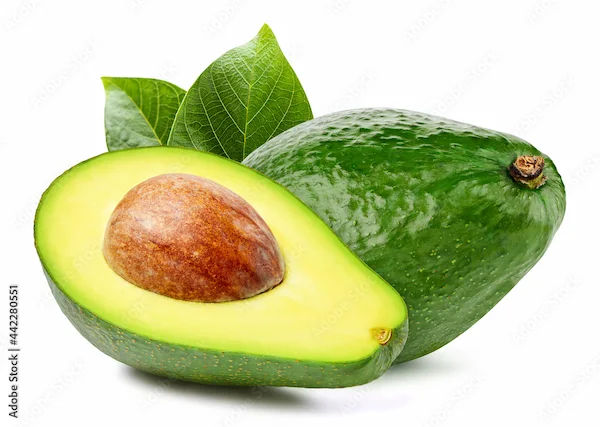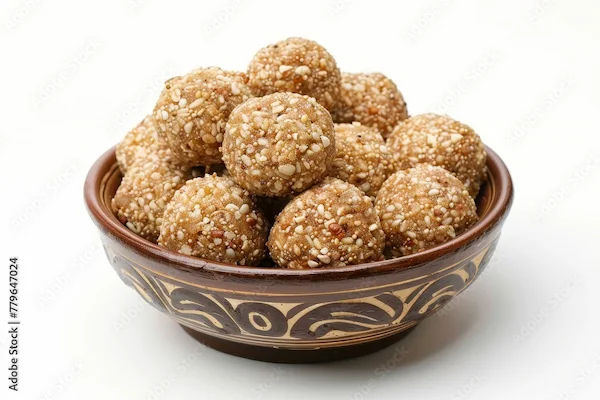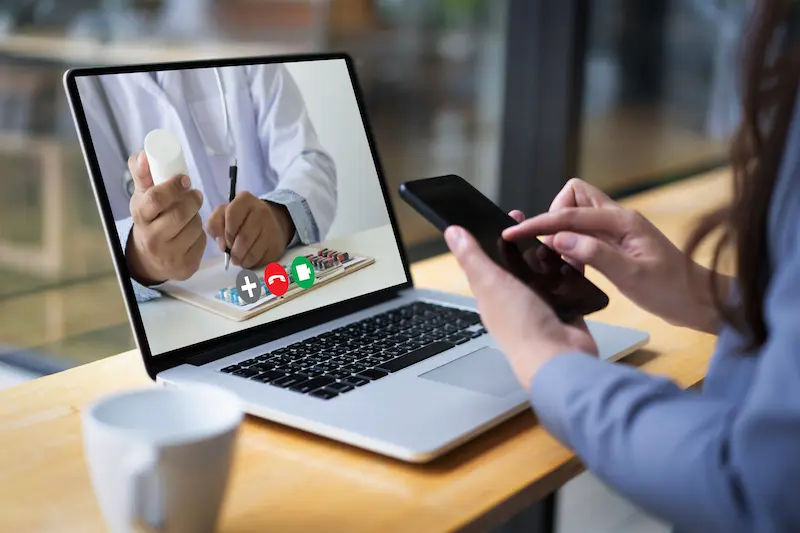Guide to Eye Care Summer Monsoon
Protect your eyes from common summer and monsoon season issues. Get essential tips on preventing allergies, infections, dry eyes, and managing humidity for optimal vision health.

Written by Dr. J T Hema Pratima
Reviewed by Dr. D Bhanu Prakash MBBS, AFIH, Advanced certificate in critical care medicine, Fellowship in critical care medicine
Last updated on 22nd Oct, 2025

Introduction
Summer brings bright sunshine, heat, dust, and long outdoor days; the monsoon layers on humidity, allergens, and a spike in contagious “eye flu” (viral conjunctivitis). Together, these seasons can challenge even the healthiest eyes. The good news? A few smart eye care habits can prevent most problems—from UV damage and dry eye to infections after swimming or during rainy months. In this guide, tailored for the general public, you’ll learn how to choose sunglasses that actually protect, avoid water-borne risks (including Acanthamoeba keratitis if you wear contact lenses), reduce digital eye strain in hot weather, and keep makeup and sunscreen from stinging or blurring your vision. You’ll also get monsoon-specific tips for conjunctivitis prevention, fungal eye injury risks, and simple first aid do’s and don’ts. Whether you’re a parent, senior, outdoor worker, swimmer, or traveler, this comprehensive summer and monsoon eye care guide covers practical steps, evidence-based advice, and quick checklists—so you can enjoy the season with healthy, comfortable eyes.
Why Summer and Monsoon Challenge Your Eyes?
Hot weather raises evaporation from the tear film, which can worsen dry eye—especially in air-conditioned rooms or with fans blowing across your face. Meanwhile, the summer’s high UV index increases the risk of acute eye sunburn (photokeratitis) and longer-term changes like pterygium and cataracts if protection is inadequate. On windy days, dust and pollen add to irritation.
When the monsoon arrives, humidity rises and microbes thrive. Viral conjunctivitis (often caused by adenovirus) tends to spread in household and community settings; outbreaks during rainy months are well documented in India and elsewhere. The All India Ophthalmological Society issued advisories during the 2023 monsoon season emphasizing hygiene and avoiding self-prescribed steroid drops, which can make infections worse. Floodwater and muddy runoff also increase exposure to bacteria, fungi, and parasites—especially risky for contact lens wearers and people with minor ocular surface injuries.
UV Protection Done Right
Sunburned eyes hurt—and UV damage accumulates over a lifetime. Choose sunglasses labeled “100% UV protection” or “UV400” (blocks both UVA and UVB). Larger, wraparound frames reduce peripheral UV entry; polarised lenses cut glare, but remember polarization does not equal UV protection. Pair sunglasses with a broad-brim hat for additional shade; the AAO notes that hats significantly reduce UV exposure to the eyes and eyelids . In very bright conditions, consider photochromic lenses that darken outdoors (ensure they still carry UV400 protection).
Timing matters: UV exposure peaks near midday. If you’re sensitive, plan outdoor activities early in the morning or late afternoon. On water, sand, and concrete, reflected UV increases your dose, so ensure sunglasses fit well and don’t slide when you sweat. For kids, prioritize durable, UV400-rated sunglasses; children get more annual sun than adults and need early protection.
Case in point: Photokeratitis, essentially a sunburn of the cornea, can occur after intense UV exposure at beaches, on boats, or even on cloudy days with strong UV. Symptoms include pain, tearing, and light sensitivity. Most cases resolve in 24–72 hours with supportive care—but prevention is best.
Consult a Top General Physician
Swimming, Rain, and Water-Borne Eye Risks
Swimming pools, hot tubs, lakes, and the sea may irritate or infect eyes. Chlorine doesn’t kill all microbes instantly, and warm water can harbor organisms like Acanthamoeba; CDC notes Acanthamoeba keratitis is rare (about 1–2 cases per million contact lens wearers per year in the U.S.) but can be vision-threatening, especially with lens wear during water exposure . Never swim or shower in contact lenses; wearing daily disposables and discarding them after a swim is safer than reusing lenses, but the safest option is no lenses at all in water. Wear snug swim goggles, rinse eyes with sterile saline (not tap water) after swimming, and use lubricating drops if irritated.
Monsoon rain and floodwater can splash contaminants into eyes, particularly in high winds. If water splashes into your eyes, don’t rub; irrigate with sterile saline or clean bottled water (in a pinch) and wash hands. If symptoms such as redness, pain, or blurred vision persist beyond 24 hours, seek care.
Conjunctivitis (“Eye Flu”) in Monsoon: Stop the Spread
Viral conjunctivitis spikes during rainy months and is highly contagious. Typical signs: watery discharge, burning, sandy sensation, and redness; both eyes often become involved sequentially. Bacterial conjunctivitis tends to produce thicker, yellow-green discharge and “stuck-shut” eyelids in the morning. Allergic conjunctivitis often itches intensely, with stringy discharge and a history of allergies.
Prevention and home care:
• Wash hands often; avoid touching/rubbing eyes.
• Do not share towels, pillowcases, makeup, or eye drops; wash linens in hot water.
• Clean frequently touched surfaces (phones, remotes, keyboards).
• Use cold compresses and preservative-free lubricating drops for comfort.
• Stay home if highly symptomatic to reduce spread.
Do not use leftover steroid eye drops; AIOS explicitly warns that steroids can prolong or worsen viral infections and mask serious conditions]. See a clinician if there’s significant pain, light sensitivity, poor vision, thick purulent discharge, a known exposure in vulnerable settings (e.g., elderly care), or symptoms persisting beyond 1–2 weeks. If symptoms persist beyond two weeks, consult a doctor online with Apollo 24|7 for further evaluation.
Contact Lens Hygiene in Hot, Humid Weather
Hot, humid weather can encourage microbial growth on lenses and in cases. Golden rules:
• Water is the enemy: Never rinse lenses or cases with tap water. Don’t swim or shower wearing lenses .
• Consider daily disposables in summer/monsoon—fewer handling steps and fresh lenses each day reduce infection risk.
• For reusable lenses: Rub-and-rinse with recommended multipurpose solution; avoid “top off” practices in the case. Replace solution each time and let the case air-dry face-down on a clean tissue.
• Replace lens cases every 1–3 months; biofilm builds up even with good care.
• Stick to wearing schedules; heat and dryness can shorten comfortable wear time.
If you develop redness, pain, light sensitivity, or blurred vision—especially after water exposure with lenses—remove lenses immediately and seek prompt evaluation. Acanthamoeba keratitis often starts subtly and worsens over days; early care is key .
Dry Eye, Screens, and AC/Fans in Summer
Dry eyes can worsen with AC, fans, and long screen hours.
Practical steps:
• The 20-20-20 rule: Every 20 minutes, look 20 feet away for 20 seconds to reset blink rate and reduce digital eye strain .
• Blink training: Consciously do 10 full, slow blinks each hour; partial blinks worsen dryness.
• Optimize your setup: Keep screens slightly below eye level; reduce overhead AC vent airflow onto your face; use a desktop humidifier if air is dry.
• Use preservative-free artificial tears 3–4 times daily during flare-ups; consider gel drops at night.
• Warm compresses and gentle lid hygiene can improve meibomian gland function if you have evaporative dry eyes.
Evidence check: Omega-3 supplements are popular, but a large randomized trial (DREAM, NEJM 2018) found omega-3s were not superior to placebo for dry eye symptom relief overall, though individuals may still perceive benefit. Prioritize environmental changes, scheduled blinking, and appropriate drops; discuss supplements with your doctor if you wish to try them.
Eye-Safe Skincare, Sunscreen, and Insect Repellents
In summer and monsoon, sweat can carry sunscreen or makeup into the eyes, causing stinging and blurred vision. Tips:
• Choose mineral sunscreens (zinc oxide, titanium dioxide) around the eyes—they’re less likely to sting than some chemical filters.
• Apply sparingly around the orbital bone, not on the eyelid margins. Use SPF-rated sunglasses and hats to reduce the need for heavy application near the eyes.
• Opt for water-resistant formulas during sweaty workouts; blot sweat with a clean towel to keep products from washing into eyes.
• Use hypoallergenic, ophthalmologist-tested eye makeup; replace mascara/liners every 3 months and never share.
• For insect repellents, apply to hands first, then to skin—avoid spraying near the face. Do not apply on or near eyelids.
If sunscreen gets in your eye, irrigate with sterile saline or clean water; avoid rubbing. Contact lens wearers should remove lenses, rinse eyes, then reinsert fresh lenses only when comfortable.
Nutrition and Hydration for Resilient Eyes
A colorful, plant-forward plate supports ocular health. Dark leafy greens (spinach, kale), corn, and egg yolks are rich in lutein and zeaxanthin—carotenoids concentrated in the macula that help filter blue light and support retinal function. Citrus, berries, and peppers provide vitamin C; nuts and seeds supply vitamin E; fish offer omega-3s that support the tear film (even if supplements show mixed benefit). Consistent hydration helps maintain tear volume; in hot weather, add electrolytes if you sweat heavily. Limit excess caffeine and alcohol, which can worsen dehydration.
People with diabetes should maintain steady glucose control, since high sugars can irritate the ocular surface and increase infection risk; annual dilated eye exams help detect retinopathy early. If you have diabetes and haven’t checked your HbA1c in a while, consider a test; Apollo 24|7 offers convenient home collection for tests like HbA1c, which supports proactive diabetes eye care during monsoon.
Kids, Seniors, and Outdoor Workers: Tailored Tips
Children: Sunglasses with UV400 and a comfortable head strap help compliance; teach kids not to rub eyes with dirty hands. For summer sports, use sport-rated protective eyewear—balls and racquets send many children to emergency rooms with preventable eye injuries each year . Swimming goggles are a must for pool days; never share towels or eye drops.
Seniors: Some medications (e.g., certain antibiotics, diuretics, retinoids) increase photosensitivity. Pair UV400 sunglasses with hats. Use lubricating drops if you’re on medications that dry the eyes. If you notice sudden floaters, flashes, or a curtain over vision, seek urgent care.
Outdoor workers: Dust, debris, and chemicals are common hazards. Wear safety-rated (ANSI/IS) protective eyewear with side shields; consider sealed goggles in heavy dust or during monsoon storms. Keep a small eyewash bottle and sterile saline on hand. For agricultural workers, monsoon increases the risk of fungal keratitis after vegetative trauma; immediate eyewash and early medical evaluation are essential.
First Aid for Common Summer–Monsoon Eye Problems
Photokeratitis: If you develop painful, light-sensitive, watery eyes after high UV exposure, rest in a dark room, use cold compresses, and preservative-free artificial tears. Avoid contact lenses until symptoms resolve. Most cases improve within 24–72 hours; see a clinician if not .
Chemical/sweat exposure: For stinging from sunscreen, repellent, or cleaners, irrigate immediately with sterile saline or clean water for at least 10–15 minutes. Remove contact lenses before irrigation if possible.
Foreign body/vegetative injury: Do not rub. Irrigate copiously. If pain, photophobia, or blurred vision persist, or if you suspect an embedded particle, seek urgent care. In tropical monsoon regions, vegetative trauma can seed fungal infection; early professional treatment is crucial .
Do-not-do list:
• Don’t use steroid eye drops without a prescription (can worsen infections) .
• Don’t patch the eye; warm, moist environments worsen some infections.
• Don’t use tap water to rinse lenses or cases.
Red flags requiring prompt care: Severe pain, marked light sensitivity, decreased vision, a white spot on the cornea, copious discharge, trauma with metal/plant matter, or symptoms persisting beyond 24–48 hours. If your condition does not improve after trying these methods, book a physical visit to a doctor with Apollo 24|7.
Myths vs Facts About Monsoon Eye Care
• Myth: “Rainwater is pure and safe for the eyes.”
Fact: In urban areas, rain can carry pollutants and microbes; avoid deliberate exposure and irrigate if splashed.
• Myth: “If one eye is infected, using drops in the other eye prevents spread.”
Fact: Using the same bottle may contaminate both eyes; follow medical advice on treatment.
• Myth: “Polarized lenses always protect from UV.”
Fact: Polarization reduces glare; look for explicit UV400 labeling.
• Myth: “Steroid drops cure any red eye.”
Fact: Steroids can worsen viral and fungal infections; never self-medicate with them.
• Myth: “Tap water is fine for rinsing lenses.”
Fact: Tap water carries microbes that can cause severe keratitis, including Acanthamoeba.
Build Your Eye Care Kit for the Season
• UV400 sunglasses (wraparound) + broad-brim hat
• Swim goggles; sport-rated protective eyewear
• Preservative-free lubricating drops; saline vials
• Clean microfiber cloth; sealed eyelid wipes
• Spare daily disposable contact lenses (if you wear lenses)
• Mini humidifier for desk; eye mask for warm compresses
• Travel-size sunscreen (mineral near eyes), sweatband
• Small flashlight for mirror checks in low light
• Apollo 24|7 app bookmarked for quick online consults if symptoms escalate
Travel and Festival Eye Safety
• Flights and AC buses: Dry cabin air—pre-hydrate, use gel drops, sit away from direct vents.
• Beaches and boats: Double down on UV protection; secure sunglasses with a strap.
• Festivals/fireworks: Use impact-rated eye protection when close to fireworks or colored powders; keep saline vials handy for quick irrigation.
• Monsoon travel: Pack sealed wipes and spare towels; avoid sharing linens; carry your own eyedrops.
Sustainable Habits You Can Keep Year-Round
• Make UV protection automatic—sunglasses by the door, hat by the bag.
• Schedule the 20-20-20 rule on your devices.
• Replace contact lens cases regularly; set reminders.
• Build a colorful, eye-friendly plate most days.
• Plan seasonal check-ins: allergy strategy pre-spring; monsoon hygiene refresh; winter humidifier routine.
Consult a Top General Physician
Conclusion
Summer and monsoon bring different—but predictable—eye challenges. With a few deliberate choices, you can protect against the big risks: UV damage, dry eye from AC and screens, water-borne infections from pools and rain, and monsoon spikes of contagious conjunctivitis. Start with the essentials—UV400 sunglasses, a hat, and a commitment to hand hygiene. If you wear contact lenses, make water a no-go zone and upgrade your cleaning routine during humid months. Build a resilient daily foundation with the 20-20-20 rule, lubricating drops, and an eye-friendly diet rich in colorful produce. Customize your approach for your life stage and setting: kid-safe sports eyewear, senior-friendly photosensitivity precautions, and impact-rated protection for outdoor workers.
Above all, know the red flags that warrant an expert’s eye—pain, light sensitivity, reduced vision, or slow-to-resolve redness. Early care often turns potential setbacks into non-events. If symptoms persist beyond two weeks, consult a doctor online with Apollo 24|7 for further evaluation, or book a physical visit if hands-on care is needed. With smart planning and simple habits, you’ll enjoy brighter days and rainy evenings alike—comfortably and safely.
Consult a Top General Physician

Dr. Abhishek Ranjan
General Practitioner
4 Years • MBBS
Kolkata
VDC Clinic, Kolkata

Dr. Soumen Paul
General Physician/ Internal Medicine Specialist
24 Years • MBBS
Kolkata
MCR SUPER SPECIALITY POLY CLINIC & PATHOLOGY, Kolkata
(25+ Patients)

Dr. Ahmad Ather Ali
General Physician/ Internal Medicine Specialist
4 Years • MBBS
Manikonda Jagir
Apollo Clinic, Manikonda, Manikonda Jagir
(25+ Patients)

Dr. Tapabrata Ray
General Physician/ Internal Medicine Specialist
4 Years • MBBS,DGM,CPMeC,ACMDC
Kolkata
MCR SUPER SPECIALITY POLY CLINIC & PATHOLOGY, Kolkata

Dr. Vishal Kumar H
General Physician/ Internal Medicine Specialist
8 Years • MBBS, master class in critical care medicine, Advanced Post Graduate Diploma in Non Invasive Cardiology, certificate course in Cardiovascular Disease & Stroke, Certificate course in Common Mental Disorder
Bengaluru
Apollo Clinic, Basavanagudi, Bengaluru
Consult a Top General Physician

Dr. Abhishek Ranjan
General Practitioner
4 Years • MBBS
Kolkata
VDC Clinic, Kolkata

Dr. Soumen Paul
General Physician/ Internal Medicine Specialist
24 Years • MBBS
Kolkata
MCR SUPER SPECIALITY POLY CLINIC & PATHOLOGY, Kolkata
(25+ Patients)

Dr. Ahmad Ather Ali
General Physician/ Internal Medicine Specialist
4 Years • MBBS
Manikonda Jagir
Apollo Clinic, Manikonda, Manikonda Jagir
(25+ Patients)

Dr. Tapabrata Ray
General Physician/ Internal Medicine Specialist
4 Years • MBBS,DGM,CPMeC,ACMDC
Kolkata
MCR SUPER SPECIALITY POLY CLINIC & PATHOLOGY, Kolkata

Dr. Vishal Kumar H
General Physician/ Internal Medicine Specialist
8 Years • MBBS, master class in critical care medicine, Advanced Post Graduate Diploma in Non Invasive Cardiology, certificate course in Cardiovascular Disease & Stroke, Certificate course in Common Mental Disorder
Bengaluru
Apollo Clinic, Basavanagudi, Bengaluru
More articles from General Medical Consultation
Frequently Asked Questions
1) Is polarization the same as UV protection?
No. Polarized lenses reduce glare; they don’t automatically block UV. Look for “100% UV” or “UV400” on the label. (long-tail keyword: sunglasses UV400 vs polarized)
2) What should I do if I get sunscreen in my eyes?
Rinse with sterile saline or clean water for 10–15 minutes, avoid rubbing, and remove contact lenses. Use lubricating drops if irritated; see a doctor if pain or blurred vision persists. (long-tail: mineral sunscreen stings eyes)
3) Can I swim with contact lenses in the pool or sea?
Avoid it. Water exposure raises the risk of serious infections like Acanthamoeba keratitis. Wear goggles without lenses, or use daily disposables and discard immediately after swimming. (long-tail: swimming with contact lenses risks)
4) How can I prevent “eye flu” during monsoon?
Wash hands often, avoid touching eyes, don’t share linens or makeup, disinfect surfaces, and stay home if highly symptomatic. See a clinician for pain, light sensitivity, poor vision, or if symptoms don’t improve. (long-tail: monsoon conjunctivitis prevention tips)
5) Do omega-3 supplements cure dry eye in summer?
Evidence is mixed. A large trial found no overall benefit over placebo. Environmental changes, scheduled blinking, and preservative-free drops are first-line. Discuss supplements with your doctor. (long-tail: best eye drops for dry eyes in summer)




